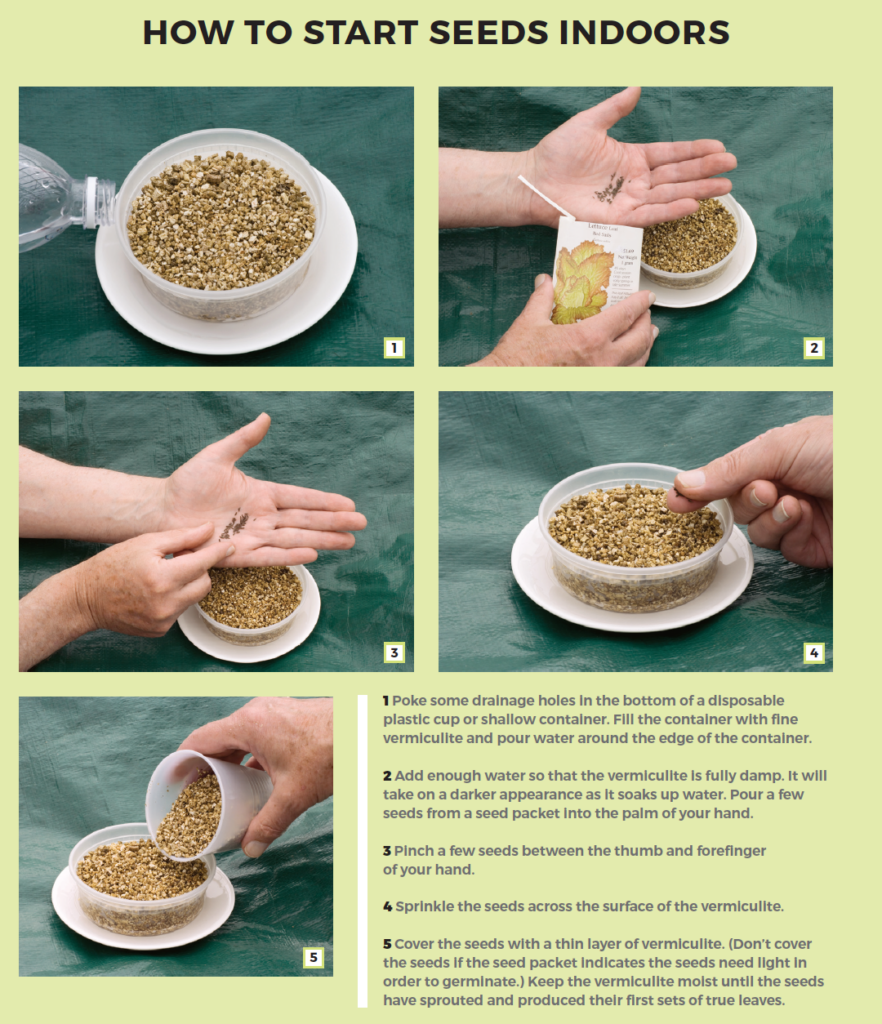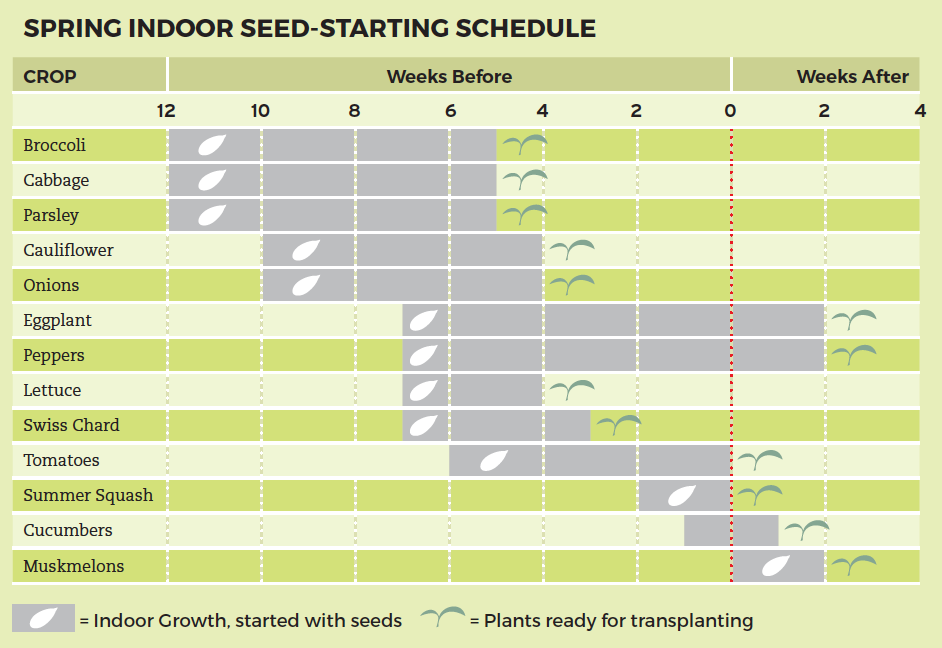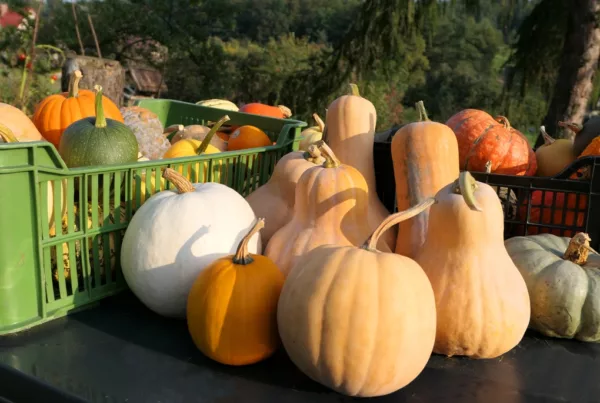One of the biggest advantages to Square Foot Gardening is the fun and efficient use of seeds. You can start most of your veggies from seed, avoid the wasteful “thinning out” of seedlings associated with traditional row gardening, and participate in the full life cycle of your food from seed to harvest. But if you’re new to seed-starting in general, and seed-starting with SFG in particular, we’re here to show you the ropes. And don’t worry about any technical terms you may have read — we’re going to walk you through those, too!
Hybrid, Non-GMO, and Heirloom — What’s the Difference?
First, let’s get the lingo down. When you buy a packet of seeds, the information that describes what you’re buying can be a bit confusing. To get the best results in your garden year after year, you’ll want to know what kind of seeds you have:
- Hybrid: Hybrid seeds are seeds that are deliberately created by cross pollinating two different varieties or species in order to produce a certain desired trait in the plants grown from the seeds produced by the cross. The first “generation” of hybrid seeds tend to produce a better and higher harvest, but after that first year, the seeds from the produce cannot be saved for use in the following years. Why? Because they will be less vigorous and often not “true to type,” meaning your results can be unpredictable.
- Open-pollinated: These are seeds produce plants that are relatively true-to type, but can have some variation because the pollination of them is not controlled. You can save seeds from open-pollinated plants and plant them again during the next season.
- Non-GMO: Non-GMO seeds are those that have not been altered by genetic engineering. GMO seeds, plants, or living organisms have been genetically modified by the process of inserting genes from one species into another, unrelated species. Important: GMO seeds are highly regulated and not available to regular gardeners. The seeds you purchase as a home gardener are non GMO.
- Heirloom: These are seed varieties that have been passed down through families and seed companies for at least 50 years. All heirlooms are open-pollinated.
Tips for Seed-Starting
So how do you start seeds, anyway? While whole books are written on this topic alone, we’ll give you the highlights here, then invite you to look over pp. 149 – 157 in the All New Square Foot Gardening, 3rd Edition book. Check out the graphic below on “How to Start Seeds Indoors.”

Seed Starting FAQ
- Do I grow seeds in soil? Mel found that the best medium to start seeds in is regular vermiculite, rather than a commercial seed-starting mix. And once you’re done sprouting those seeds? You can add that vermiculite to your future batches of Mel’s Mix™ — we are all about this no-waste philosophy!
- Should I soak seeds before planting them? Though not necessary for all seeds, Mel did recommend soaking larger seeds like bean, cucumber, corn, squash, and peas to help them sprout or germinate more quickly. Simply soak them in a cup with water for about 15-20 minutes before planting — and remember, any seed that floats to the top of the water is not viable and will not produce a plant at all.
- What kind of a container should I grow them in? A cup or a shallow dish will work well, but if you’re into recycling (of course you are), we recommend using toilet paper tubes cut in half. Fill them with vermiculite, plant your seeds according to the graphic below, and place them in a tray filled with a shallow layer of water. If the toilet paper tubes start to unravel as they soak up water, just place a rubber band around each one to hold it all together.
- After seeds sprout, do I plant them directly into my Square Foot Garden outside? Not so fast! You know how when seeds sprout, they have a set of leaves that actually don’t look like the plant’s regular leaves? (Well, if you didn’t, you do now.) Those leaves are called the seed leaves or cotyledons, and when you see them develop, you’ll want to carefully transplant that tiny seedling into a slightly larger plastic four-pack filled with Mel’s Mix™. Keep the Mel’s Mix™ moist but not soggy, and when the plant has developed more sets of true leaves, you can gradually expose them to more direct sunlight (“hardening off”) before transplanting them into your Square Foot Garden.
- When should I start seeds? That depends upon where you live and what you’re growing. Refer to the Spring Indoor Seed-Starting Schedule chart below to know when to start seeds and plant transplants, and always check with your County Extension office for recommended times for your area.

Seed-Starting Resources
These days you can buy seeds nearly anywhere, from grocery stores to feed stores and online. Because there are so many seed companies out there, we get that it can sometimes be a bit confusing about which ones are “good” or reputable, so we put together a short list of our favorites:
- Renee’s Garden https://www.reneesgarden.com : Heirloom & gourmet vegetable, flower, and herb seeds
- Johnny’s Selected Seeds https://www.johnnyseeds.com : A wide variety of non-GMO, organic, heirloom, and hybrid vegetable, fruit, flower, and herb seeds
- Botanical Interests https://www.botanicalinterests.com : Non-GMO vegetable, flower, and herb seeds, with a variety of certified organic and heirloom offerings in beautiful and informative seed packets
- The Seed Guy https://theseedguy.net : Heirloom vegetable, grain, herb, and flower seeds
- Baker Creek Heirloom Seeds https://www.rareseeds.com : Heirloom vegetable, flower, and herb seeds



